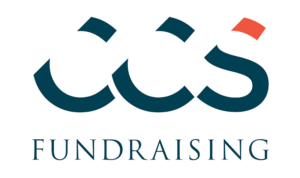Traditionally, those who make a gift every year are schools’ most loyal supporters. These individuals are bonded to the organization’s mission through consistent communication and engagement. As fundraisers, it is our responsibility to keep donors informed, understand what motivates them, and share the impact of their gift — no matter the size. Major gifts come to fruition through dedicated donor cultivation and engagement. By building and stewarding relationships with existing donors rather than working to acquire new ones, we can bridge the gap between annual and major gifts.
Understanding how and when to transition a mid-level or leadership annual giving donor to major gifts is crucial for strengthening an organization’s major gift pipeline. While this transition starts with exploring one’s giving potential, it ends with a shift in the donor’s mindset. As fundraisers, we can raise donors’ sights and inspire them to think deeply with us on what they hope to accomplish philanthropically.
building a strong major gift program is important for the education sector
In partnering with various nonprofits, CCS found that the top 10% of all donors contributed 92% of total fundraising dollars over ten years.
Notably, education partners have great confidence in major gifts in 2023.
• 45% of an institution’s fundraising comes from major gifts
• 84% anticipate mid-level gifts will either increase or stay the same
• 87% anticipate major gifts will either increase or stay the same
Defining a leadership annual giving prospect
What constitutes a leadership annual giving prospect at an organization can vary. For example, some organizations consider a leadership annual giving donor to be someone who makes an annual contribution of $1,000 to $25,000. Organizations that choose to invest in engaging leadership annual giving staff and a formal moves management process are building a major-gift-centered donor pipeline. This pipeline is focused on identifying and qualifying emerging prospects and ensuring that loyal, recurring donors feel connected.
How to transition a leadership annual giving donor to major gifts
Ensure the following are well thought out and successful before considering moving a leadership annual giving donor to your major gift pipeline.
Personalized Communication and Engagement
Development team members should send personalized communication to leadership annual giving donors, in addition to broad-based newsletters and emails. Providing a donor with the opportunity to have an assigned point of contact on the development team creates a deeper connection to the organization. Donors want to hear from you and understand how their gift is being put to work and their impact on the community.
Strong Stewardship
Leverage stewardship to inspire donors to dream big. Consider sharing stories of those directly impacted by your organization’s mission and what can happen when philanthropy is put to work. If you have giving societies in place, determine how a mid-level or consecutive giving society can create a natural cadence of communication. Provide meaningful touchpoints with key personnel at the organization, recognition, and opportunities for donors to see their gift in action. Strong stewardship can motivate donors to keep giving and, more importantly, consider an increased gift. Donors of all gift sizes who receive exceptional stewardship are able to see first-hand how your organization is handling their gifts. This, in turn, furthers their trust in your school.
WHen leadership Annual Giving Donors Should be Moved to the Major Gift Pipeline
Consider these key indicators when determining if a leadership annual giving donor should be moved to the major gift pipeline:
Note: Not all of the following need apply to move a donor into the major gift pipeline.
Qualify the donor. Prioritize consecutive, longtime donors who can make a major gift. Utilize a wealth screening tool to determine the donor’s capacity, including assets, current employment, and business holdings. Ensure your interests are aligned, and determine if a relationship exists either personally or with someone close to them.
Understand the donor’s philanthropic involvement within the community. Explore their giving (size and focus) to similar organizations or other nonprofits within your community.
Identify any shifts in the donor’s giving to the organization. Either the vehicle in which they give has changed and/or they have increased their annual gift amount. Vehicles to flag include giving through a family foundation or donor advised fund, a stock gift, or through their IRA.
Note a first-time unrestricted gift that falls within your organization’s major gift threshold (ex: greater than $25K). Also note if a donor shares one of the following:
- They have included the organization in their will.
- They are interested in serving in some volunteer leadership capacity (board, campaign, etc.).
- They have experienced a major life change such as selling a business, retiring, or finding a new job.
As you build and grow your major gift pipeline, consider those closest to your organization as a starting point. Look at your leadership annual giving donors’ access, affinity, and ability to give — there may be a few diamonds in the rough.
More Insights
AI + Fundraising Webinar
Explore the transformational potential of artificial intelligence in modern fundraising practices in this video featuring leading experts and practitioners in the field.
2024 Philanthropic Landscape, 13th Edition
This report provides a comprehensive look at the current state of US philanthropy, compiling and analyzing annual data from Giving USA and other prominent research to ensure your organization stays up-to-date on the most significant industry trends.
